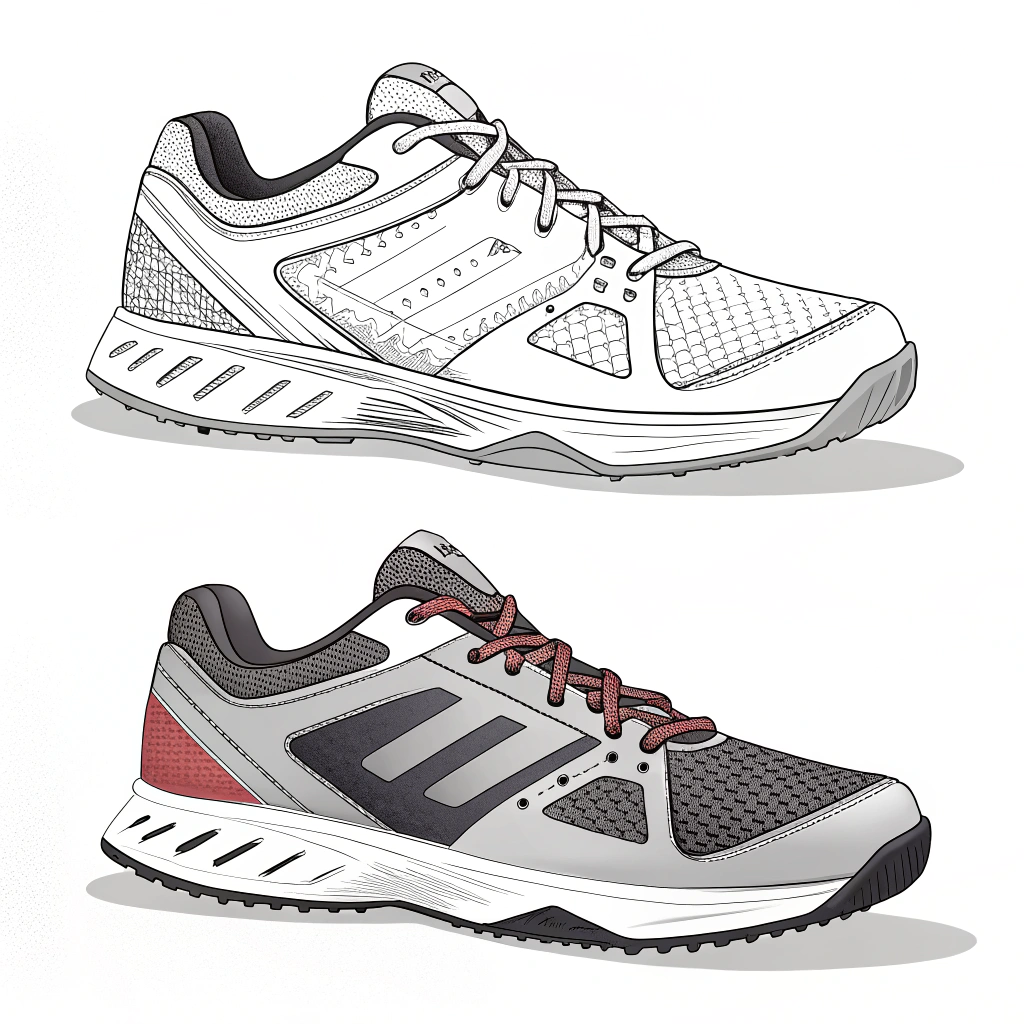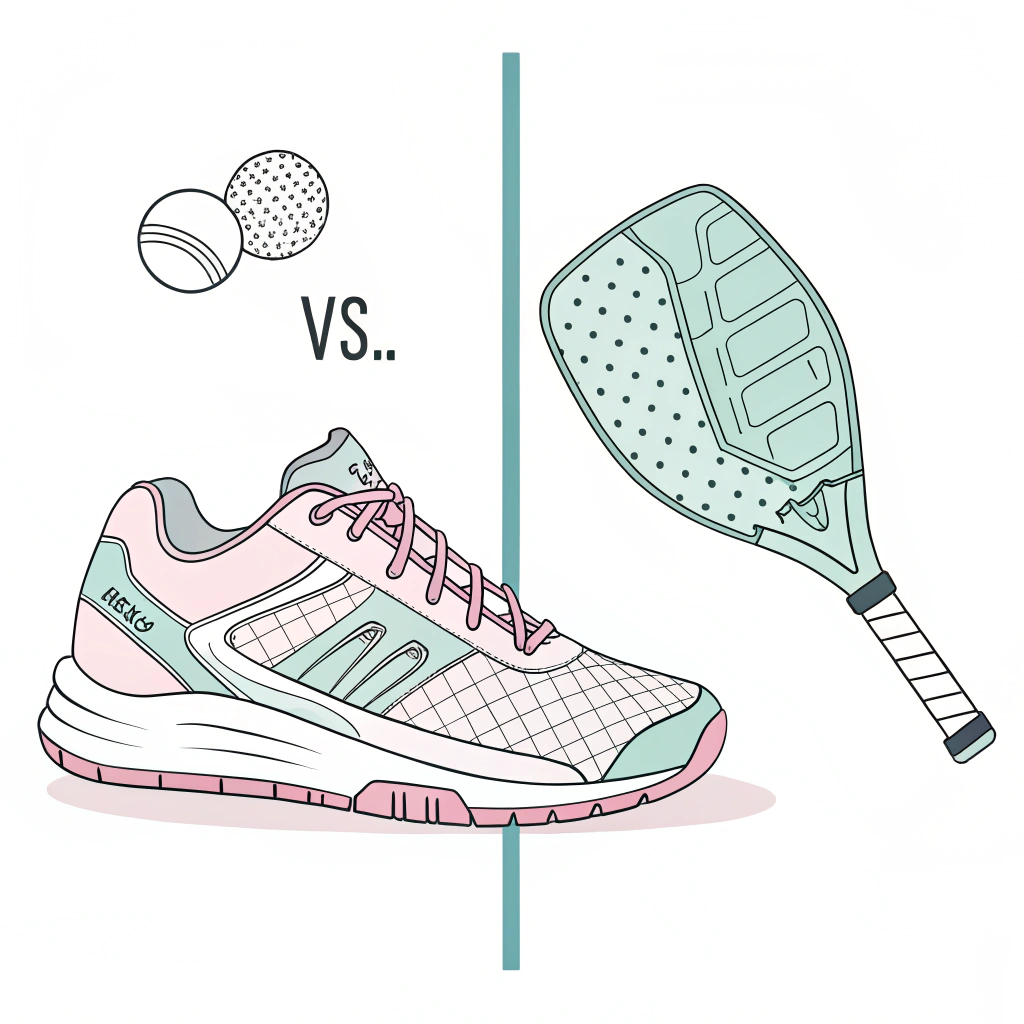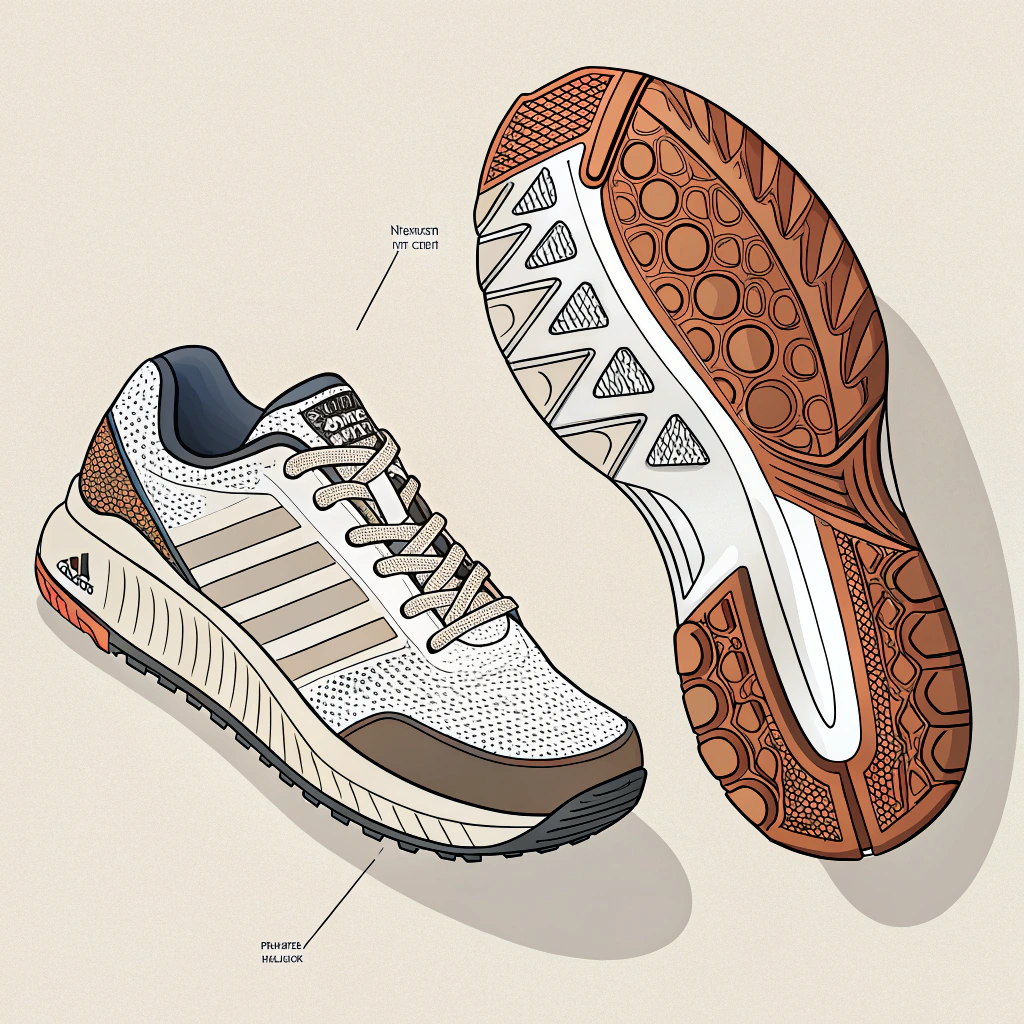Quick Answer: While tennis shoes and pickleball shoes share some similarities, they are not the same. Tennis shoes are engineered for larger court surfaces and more extensive lateral movements, whereas pickleball shoes are specifically designed for the unique demands of smaller, often indoor or outdoor pickleball courts, offering specialized grip, cushioning, and stability.
For procurement managers1 in the sports equipment industry, understanding product differences is essential to meet end-user performance requirements. As the popularity of pickleball surges globally, many distributors are evaluating whether existing tennis shoe inventories can serve pickleball players or if they should invest in dedicated pickleball shoe lines. This article dives deep into the distinct performance attributes, design differences, and market considerations between tennis shoes and pickleball shoes. Our goal is to provide a comprehensive comparison that aids in making informed B2B procurement decisions.
Tennis shoes are primarily created for varying court surfaces—hard courts, clay, and grass. They emphasize durability and grip required for full-length sprints, rapid lateral movements, and overall court coverage. In contrast, pickleball shoes focus on:
- Enhanced grip on smaller courts: Designed to deal with fast, multidirectional movements.
- Tailored cushioning: Needed for sudden stops and pivots.
- Optimized stability: To support quick starts and abrupt directional changes on court surfaces that can vary between indoor and outdoor play.
These differences are reflected not only in design but also in the materials used and the production processes adopted by manufacturers.
Outsole design2 and Grip Technology
The outsole design is one of the key differentiators:
- Tennis Shoes: Typically feature patterned rubber soles that are optimized for sliding on grass, gripping on clay, and providing cushioning on hard surfaces. They incorporate durable compounds to withstand the rigors of larger court movements.
- Pickleball Shoes: Often include even more specialized grip patterns designed for smaller court areas, ensuring excellent traction on wooden or synthetic indoor floors, along with specialized rubber compounds that minimize wear when used outdoors.
Another fundamental difference lies in cushioning and stability features:
- Tennis Shoes: Focused on providing shock absorption over long matches with extended lateral movement support. They are often heavier, balancing cushioning with necessary stability.
- Pickleball Shoes: These require a more lightweight design with a focus on midsole cushioning to absorb the quick, explosive movements that characterize pickleball. Stability is enhanced through a lower profile to offer better ground feel and control.
The selection of materials further distinguishes the two:
- Upper Materials: Tennis shoes often use breathable mesh combined with synthetic overlays for support, aimed at long-duration comfort. For pickleball, materials might focus on tighter constructions that offer a competitive edge in precision and responsiveness.
- Reinforcement: Tennis shoes may have reinforced areas around the toe to counteract wear and tear, while pickleball shoes often incorporate targeted reinforcement in the lateral sections to support rapid stops and pivots.
Below is a comparative table outlining key differences between tennis shoes and pickleball shoes, offering a quick visual summary for procurement decisions:
| Feature | Tennis Shoes | Pickleball Shoes |
|---|---|---|
| Court Compatibility | Designed for multiple court surfaces (hard, clay, grass) | Optimized for smaller courts; suitable for indoor and outdoor |
| Outsole Design | Durable, varied tread patterns for different surfaces | Specialized grip patterns for rapid, multidirectional movement |
| Cushioning | Heavy-duty cushioning for extended play and impacts | Lightweight, responsive cushioning for quick stops and pivots |
| Stability | Focuses on heel stability for lateral movement | Enhanced midsole stability for fast directional changes |
| Upper Construction | Breathable mesh with synthetic overlays for support | Tighter, reinforced design focusing on control and responsiveness |
| Weight | Generally heavier due to robust construction | Lighter to enhance agility and court feel |
| Target User | Tennis players with varying surface needs | Pickleball players requiring agile, precise performance |
| Durability | Designed to withstand longer and diverse play sessions | Designed for intense, repetitive movements on compact courts |
This table highlights that while there is some overlap in design philosophy, the specialization of pickleball shoes makes them distinctly different when performance and user safety are considered.
The rapid growth of pickleball globally, especially in markets that traditionally favored sports like tennis, has led to evolving consumer expectations. Procurement managers need to recognize that players are increasingly seeking footwear that promises:
- Enhanced agility and control: Critical for the fast pace of pickleball.
- Durability under specific conditions: Whether on indoor gym floors or outdoor synthetic courts.
- Innovative cushioning systems: That reduce fatigue over shorter, but more rapid periods of play.
As distributors aim to capture this growing segment, it becomes imperative to differentiate between using multipurpose tennis shoes versus investing in dedicated pickleball models.
In a similar way to elite paddle manufacture processes at companies like NEX Pickleball, manufacturers of sports footwear invest heavily in precision production techniques. For example:
- Hot Pressing: Can be used to infuse durability into tennis shoe outsoles, ensuring reliable performance over long matches.
- Cold Pressing: Allows pickleball shoes to benefit from less material alteration, leading to greater control and a consistent ball feel.
- **Thermoforming3: Provides the ability to create intricately designed shoe components that cater to the specific stress points in pickleball play.
These processes ensure that both tennis and pickleball shoes meet quality standards, but the emphasis shifts according to the targeted sport's specific demands.
B2B buyers should enquire about the rigorous testing protocols employed during product development. For instance:
- **Impact resistance4 and durability tests are crucial for tennis shoes to simulate extensive court play.
- Grip and traction tests under various conditions (indoor wooden courts versus outdoor synthetic surfaces) are critical for pickleball shoes.
- Wear trials by professional athletes: Gathering real-world performance feedback helps validate design improvements and highlight potential areas for customization.
A proactive supplier can provide detailed documentation and case studies that illustrate how these tests lead to better-designed products, which is a compelling inner value proposition for procurement managers.
From a procurement standpoint, the decision between stocking tennis shoes versus dedicated pickleball shoes hinges on several factors:
- Market Demand: Research the growth trends in pickleball participation. An increasing number of enthusiasts tied to organized sports associations may justify dedicated product lines.
- **Cost-Benefit Analysis5: Compare the price points of multipurpose shoes against specialized models. While specialized pickleball shoes may have a higher unit cost, their market appeal and potential for higher performance metrics might deliver superior value for end-customers.
- Inventory Management: Evaluate the potential risks of unsold inventory. Diversifying product lines could reduce the risk by catering to diverse consumer segments rather than relying solely on tennis shoe sales.
- Supplier Relationships: Establish long-term agreements with suppliers that demonstrate technological expertise in both tennis and pickleball footwear production to ensure consistent product quality and innovation.
A well-developed business case, backed by specific data on usage conditions and performance metrics, can significantly influence procurement decisions. Workshops or demo sessions with suppliers are also valuable in understanding the nuances of the specialized designs offered.
Consider the experience of a mid-sized sports retailer that originally stocked only tennis footwear. As the pickleball market began to grow, the retailer noticed increased inquiries regarding either alternate use of tennis shoes or the availability of specialized pickleball shoes. After evaluating the performance characteristics and procuring a limited trial batch of dedicated pickleball shoes, the retailer observed several benefits:
- Enhanced customer satisfaction: Players reported superior grip and agility on mini-courts.
- Lower return rates: The shoes better met performance expectations under pickleball-specific movement.
- Increased repeat purchase rates: Positive word-of-mouth among pickleball players led to higher sales in that category.
This case underlines the importance of aligning product selection with the target sport's unique demands—ensuring that end-user performance is never compromised. For procurement managers, this means aligning inventory with market trends and optimizing supply chains to balance between multipurpose and specialized offerings.
In conclusion, tennis shoes and pickleball shoes are distinct products designed to meet different performance and usage scenarios. While both types share the common goal of ensuring safety, support, and durability, the differences are significant enough to impact player performance and satisfaction. Here are the key takeaways for B2B procurement managers:
- Product Differentiation: Invest in dedicated pickleball shoes if catering to markets where pickleball is on the rise.
- Performance Metrics: Assess design elements such as outsole grip, cushioning systems, and material specifications to ensure optimal performance.
- Supplier Engagement: Partner with experienced manufacturers who can demonstrate technological expertise in specialized sports footwear.
- Market Trends: Keep an eye on emerging trends in both tennis and pickleball markets to align inventory strategies accordingly.
By carefully evaluating these factors, procurement managers can ensure that they offer footwear solutions that meet the dynamic needs of athletes while also maximizing the return on investment for their distribution channels.
-
Is there any difference between tennis and pickleball shoes?
Yes, there is a noticeable difference. Tennis shoes are built to handle larger courts across hard, clay, or grass surfaces, providing robust support and cushioning for extensive lateral movements. Pickleball shoes, however, are engineered for smaller courts and rapid, multidirectional movements, with specialized grip patterns and cushioning tailored for both indoor and outdoor play. -
Are tennis and paddle shoes the same?
Not exactly. While tennis shoes typically offer heel stability for prolonged lateral movements on varying surfaces, paddle shoes (often used in sports like padel and similarly in pickleball) focus on midsole stability. This design shift supports the rapid stops, pivots, and forward-backward motions that are unique to these sports.
-
procurement managers: Reading this article will provide insights into the roles and decision-making responsibilities of procurement managers in the sports equipment industry, helping you align inventory strategies with market dynamics. ↩ ↩
-
outsole design: Explore how different outsole designs impact performance and durability across various court surfaces, enabling more informed product specifications for sports footwear. ↩ ↩
-
Thermoforming: Learn about thermoforming techniques used in footwear manufacturing, which can enhance product performance by tailoring components to specific athletic demands. ↩ ↩
-
Impact resistance: Understand the importance of impact resistance testing in ensuring durable and high-performance sports footwear, a key factor in product reliability and customer satisfaction. ↩ ↩
-
Cost-Benefit Analysis: Discover how to effectively compare costs versus benefits in product selection, a critical strategy for optimizing procurement and inventory decisions in a competitive market. ↩ ↩







